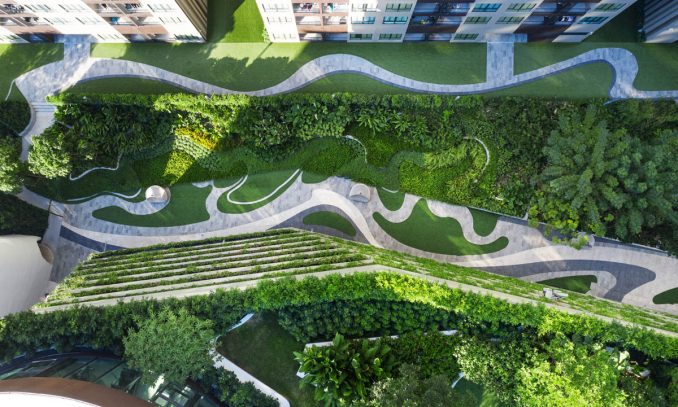
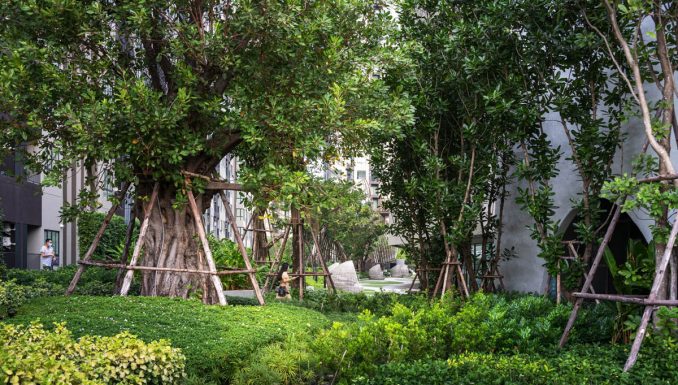
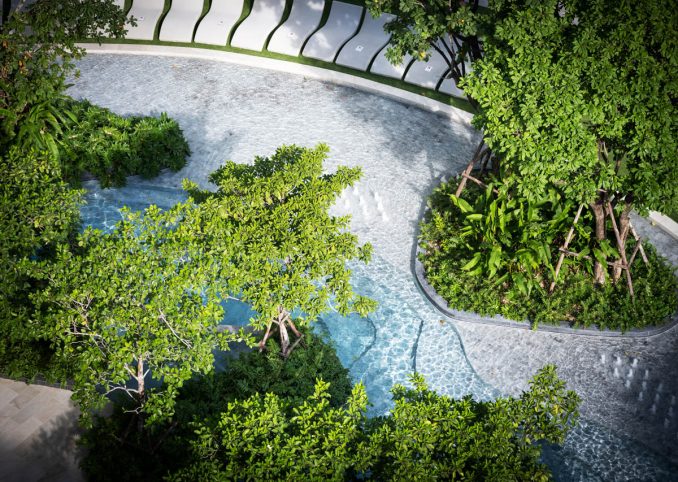
In the last few years, Bangkok has topped the list of cities with the worst air quality in the world on Air Visual, a famous air pollution monitoring app. According to the data, with the highest peak of 118 μg/m3in December, 2020. The Fine Particulate Matters (PM 2.5) crisis is not a new phenomenon. In 2020, according to IQ Air, air pollution caused an estimate of 9,500 deaths in Bangkok and US$3.7 billion in damage. Obviously, this is a severe problem that needs urgent attention.
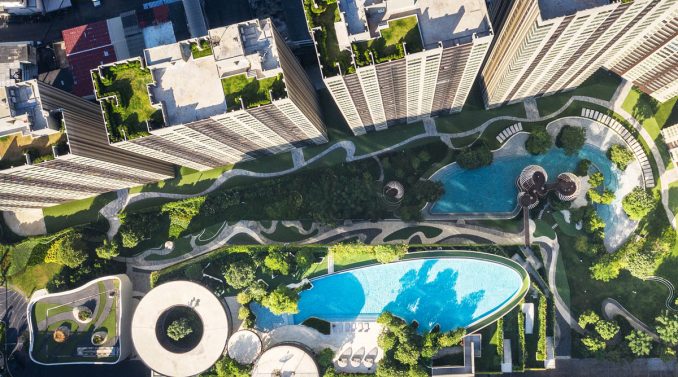
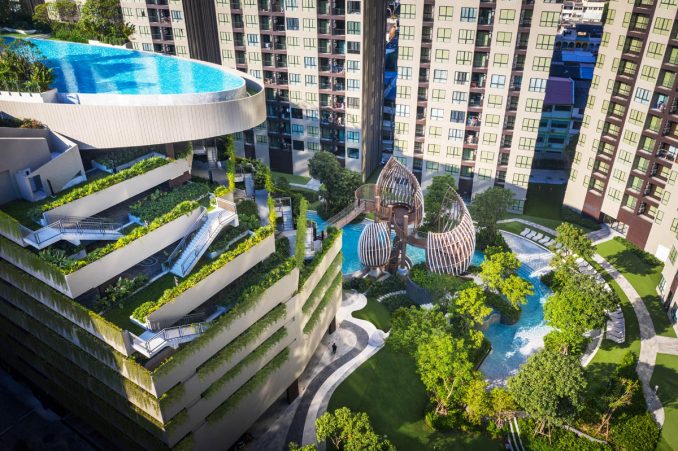
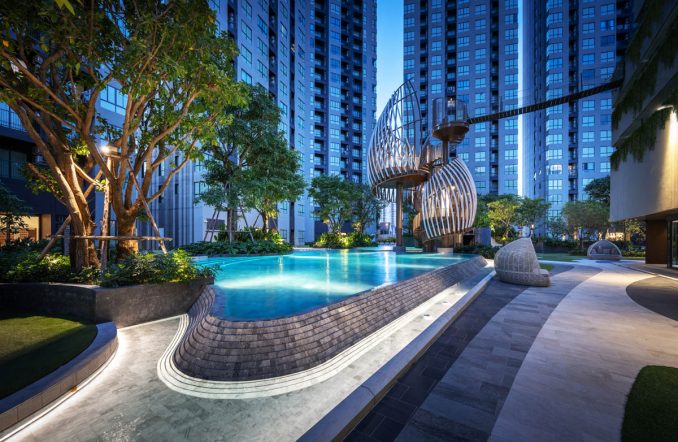
In response to the city’s future development, Elio Del Nest promotes a research-based design centered on the concept of Urban Air-Filtration, that integrates a new modern living with great concern for the environment and residents’ health. Starting from the arrangement of residential buildings. The residential buildings are divided into seven units that stack upwards, mimicking the formation of mountains. The final scheme reduces building footprints and maximizes outdoor green spaces, which is up to 67% of the total areas. The landscape team worked closely with experts to tackle air pollution problems, an approach that focuses on reducing the exposure of PM2.5, CO, CO2 and VOCs in order to alleviate air pollution. After the study, the air-filtration strategy was proposed at an appropriate location on the site. PM2.5 absorption zone is located at the entry plaza acting as the first layer of collecting fine particles. The carbon absorption zone aims to reduce carbon from vehicle emissions along the corridor and parking lots. The VOCs absorption zone is in the north-west area of the site to reduce VOCs released from the nearby industries. We extensively examined plant capabilities and functions that absorb PM2.5, Carbon, VOCs and release O and chose groupings of local planting species appropriately to complement the purpose in each zone.
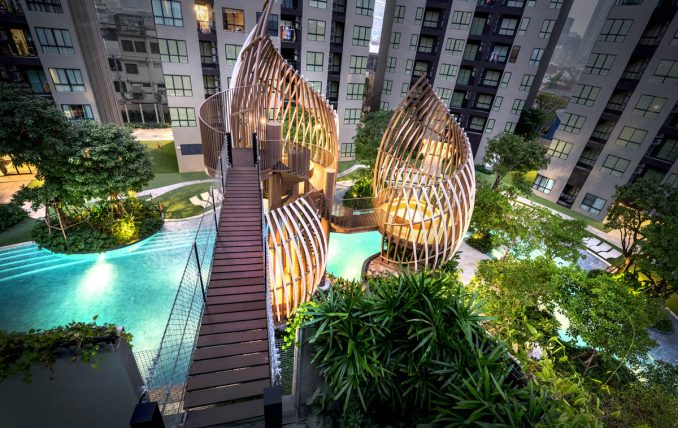
Moreover, we proposed a nature-mimicry concept of the urban forest to construct a natural environment that enhances human and urban creatures’ qualities of living. In the blissful urban forest, birds and their habitats would appear as an indication of abundance and exuberant bloom. The landscape team explored a birds nest as a muse for this concept. The nest’s essential characteristics inspired the main design concept of this project to symbolize sanctuary, safety, and natural fertility. The design form reflects the dynamic movements of nature hence bringing balance to softscape and hardscape spaces. The green spaces integrated with various outdoor activities, divided into three layers, The Oxygen Valley, The Green Hike and The Pinnacle Forest welcome the residents. The layers interlace, maximizing the utilization of outdoor spaces. The Oxygen Valley offers them the choice to jog or walk on the loop underneath the green canopies and the green hike with 1.5Km. per round.
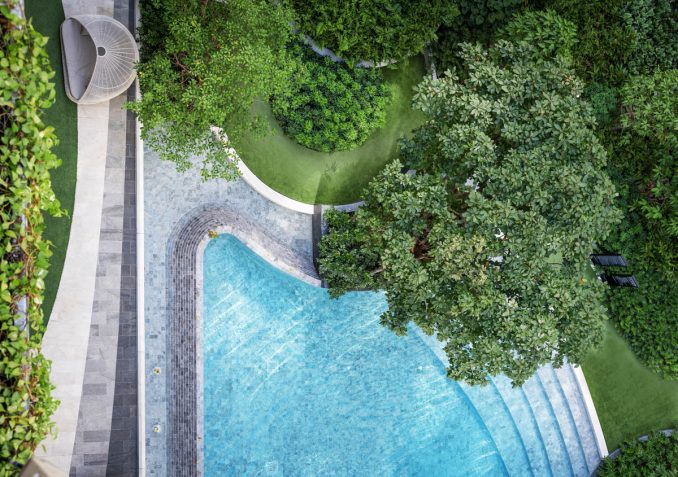
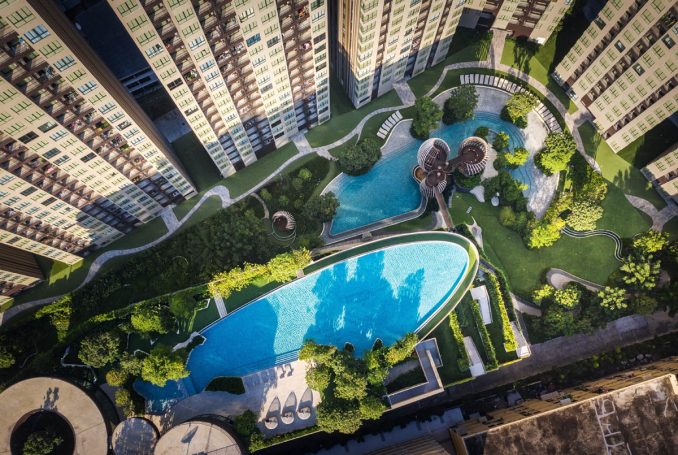
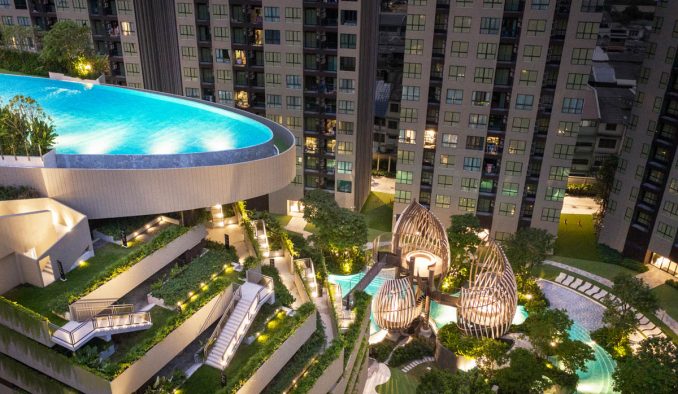
In response to the city’s future development, Elio Del Nest integrates a new modern living with great concern for the environment and residents’ health. It targets to mitigate air pollution for the neighborhood’s areas, for the city and even for generations to come.
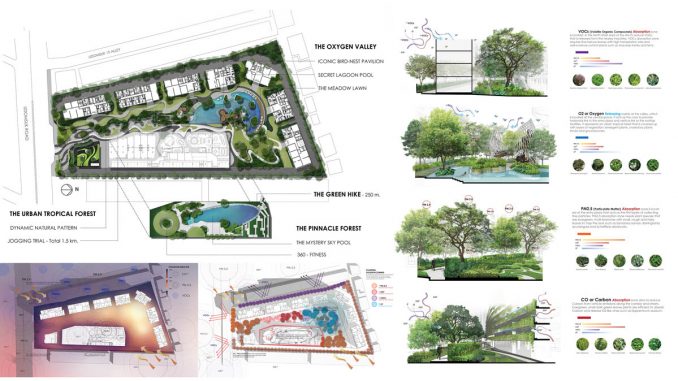
Elio Del Nest – The natural Air-Filtration Residences
Location: Bangna district, Bangkok, Thailand
Landscape Architect: Redland-scape. Ltd.
Architect: Atom Design Studio
Client: Ananda Development
Images & Text Credit: Redland-scape. Ltd.
